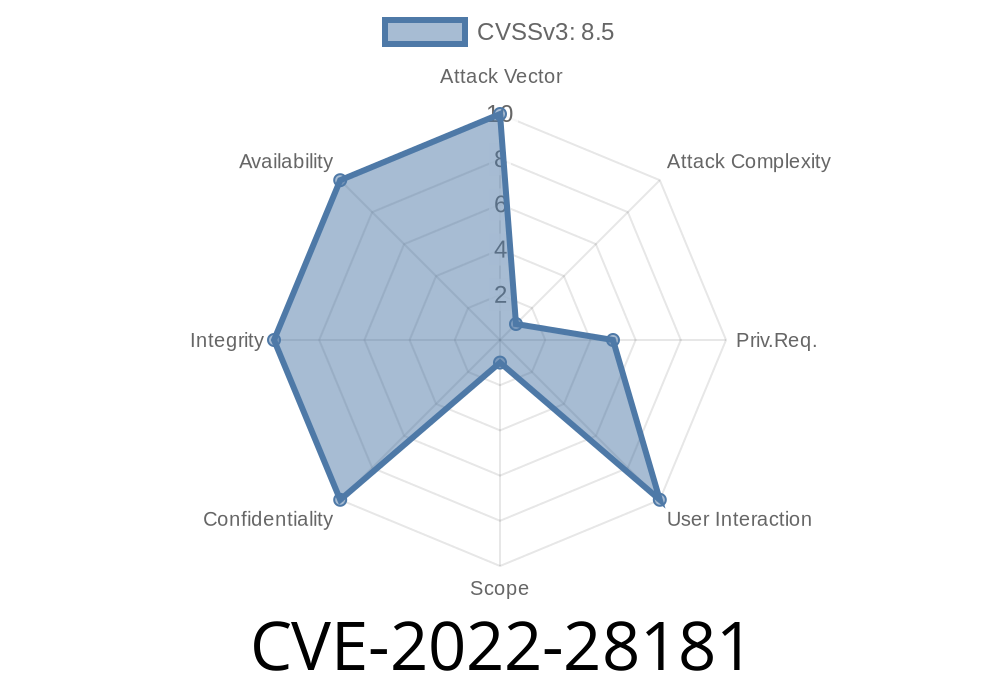A newly discovered vulnerability (CVE-2022-28181) in NVIDIA GPU Display Driver for both Windows and Linux operating systems could leave systems exposed to various risks. Regular unprivileged users on the network may exploit this vulnerability to execute code, perpetrate denial of service (DoS) attacks, escalate privileges, disclose information, and tamper with data. Furthermore, the scope of the impact could extend to components beyond the kernel mode layer.
Vulnerability Details
The CVE-2022-28181 vulnerability exists in NVIDIA GPU Display Driver and pertains to the kernel mode layer. It is an out-of-bounds write vulnerability, which means that an attacker can manipulate data beyond the intended memory buffer through a specially crafted shader. The vulnerability can result in unauthorized actions such as code execution, DoS, escalation of privileges, information disclosure, and data tampering.
Exploitation
To exploit this vulnerability, an attacker needs to create and send a specially crafted shader to the target system's vulnerable NVIDIA GPU Display Driver. The following code snippet demonstrates the shader that can be crafted to trigger the vulnerability:
void main() {
vec4 oob_data = vec4(1., .5, .25, .125);
unsigned int oob_address = xBADCDE; // This is just a placeholder
write_data(oob_address, oob_data); // This write operation will be out-of-bounds
}
This proof-of-concept code snippet might initiate an out-of-bounds write and allow the attacker to control the system's behavior or tamper with system data.
The original references to the disclosure of the CVE-2022-28181 vulnerability can be found here
1. NVD - CVE-2022-28181
2. NVIDIA Security Bulletin
Mitigation
Users are advised to update their NVIDIA GPU Display Drivers to the latest versions available to protect their systems. NVIDIA has released a patch addressing the vulnerability. You can update the drivers by visiting the following links:
- For Windows Users: NVIDIA Driver Downloads
Conclusion
CVE-2022-28181 is a critical vulnerability in NVIDIA GPU Display Driver that may pose serious security risks if left unpatched. Users are urged to update their drivers and remain vigilant of future security updates to protect their systems against potential exploits. Betters safe than to risk exposure to code execution, denial of service, or data tampering due to an unpatched system.
Timeline
Published on: 05/17/2022 20:15:00 UTC
Last modified on: 05/26/2022 18:59:00 UTC
